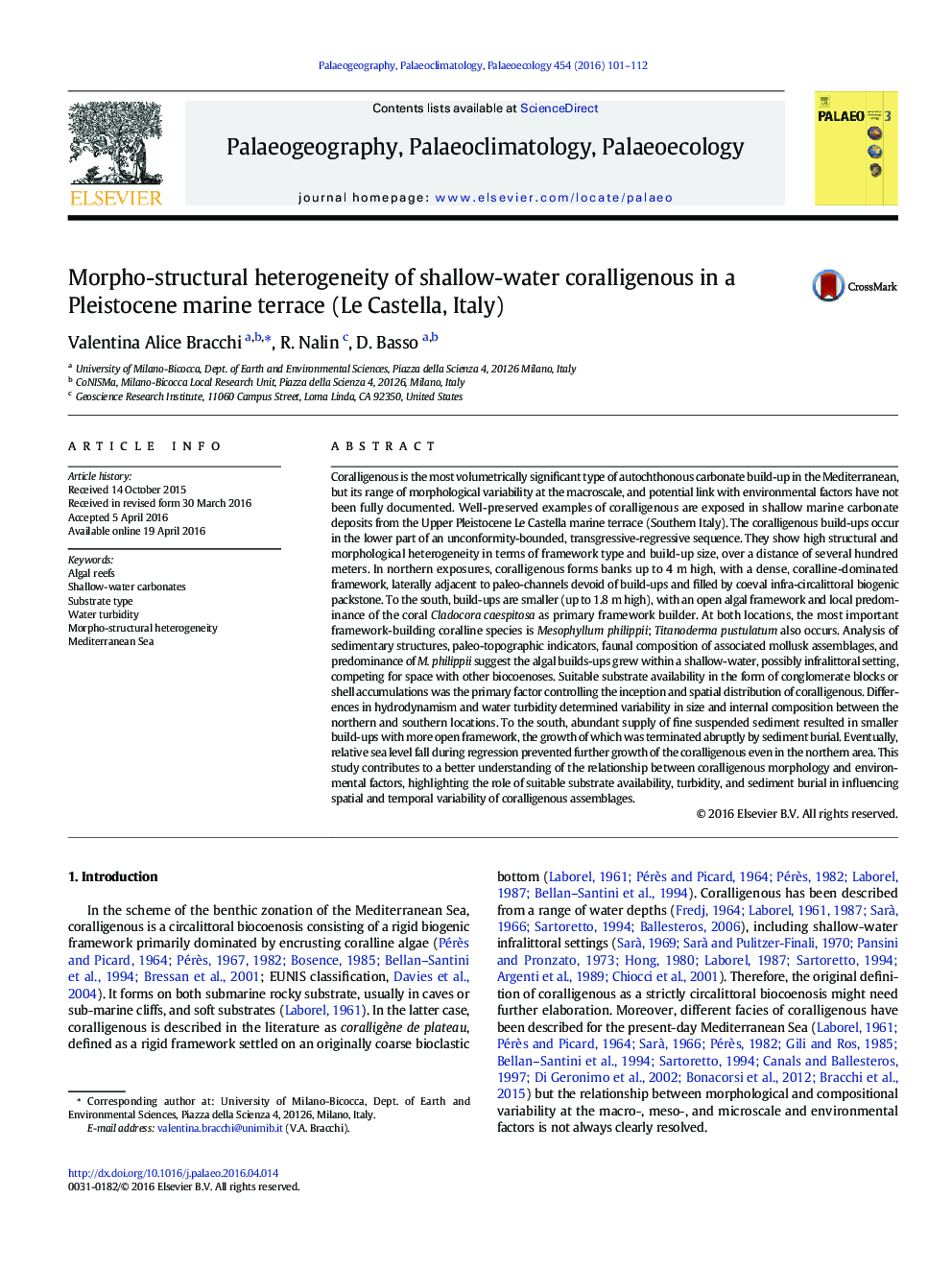| کد مقاله | کد نشریه | سال انتشار | مقاله انگلیسی | نسخه تمام متن |
|---|---|---|---|---|
| 4465601 | 1622137 | 2016 | 12 صفحه PDF | دانلود رایگان |

• We describe coralligenous (C) build-ups from an Upper Pleistocene paleo-shelf area.
• Extensive C bioconstructions developed in shallow, possibly infralittoral, waters.
• C shows notable variation in size, composition and framework over short distances.
• Large blocks on mobile substrate affect inception and spatial distribution of C.
• Turbidity and sediment input affect growth style and demise of infralittoral C.
Coralligenous is the most volumetrically significant type of autochthonous carbonate build-up in the Mediterranean, but its range of morphological variability at the macroscale, and potential link with environmental factors have not been fully documented. Well-preserved examples of coralligenous are exposed in shallow marine carbonate deposits from the Upper Pleistocene Le Castella marine terrace (Southern Italy). The coralligenous build-ups occur in the lower part of an unconformity-bounded, transgressive-regressive sequence. They show high structural and morphological heterogeneity in terms of framework type and build-up size, over a distance of several hundred meters. In northern exposures, coralligenous forms banks up to 4 m high, with a dense, coralline-dominated framework, laterally adjacent to paleo-channels devoid of build-ups and filled by coeval infra-circalittoral biogenic packstone. To the south, build-ups are smaller (up to 1.8 m high), with an open algal framework and local predominance of the coral Cladocora caespitosa as primary framework builder. At both locations, the most important framework-building coralline species is Mesophyllum philippii; Titanoderma pustulatum also occurs. Analysis of sedimentary structures, paleo-topographic indicators, faunal composition of associated mollusk assemblages, and predominance of M. philippii suggest the algal builds-ups grew within a shallow-water, possibly infralittoral setting, competing for space with other biocoenoses. Suitable substrate availability in the form of conglomerate blocks or shell accumulations was the primary factor controlling the inception and spatial distribution of coralligenous. Differences in hydrodynamism and water turbidity determined variability in size and internal composition between the northern and southern locations. To the south, abundant supply of fine suspended sediment resulted in smaller build-ups with more open framework, the growth of which was terminated abruptly by sediment burial. Eventually, relative sea level fall during regression prevented further growth of the coralligenous even in the northern area. This study contributes to a better understanding of the relationship between coralligenous morphology and environmental factors, highlighting the role of suitable substrate availability, turbidity, and sediment burial in influencing spatial and temporal variability of coralligenous assemblages.
Journal: Palaeogeography, Palaeoclimatology, Palaeoecology - Volume 454, 15 July 2016, Pages 101–112